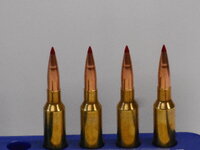I had been loading some Hornady 130 gr. ELD-M bullets in my 6.5 CM and was getting significant marks on the bullet from the seating stem. So, I sent some bullets and cases to Forster Products with a request for a custom honed seating stem.
When they had finished the work (about one week), Scott from Forster called me to talk to me a little about neck tension and seating forces. It turns out Forster Products had been doing some research on this subject, and he wanted me to be aware of their findings. He sent me two links for my perusal. He said I could share them on the Nosler Reloading Forum so here they are:
TEST - this is a link to the test we (Forster Products) did on seating pressure.
PODCAST – this is podcast we (Forster Products) did where Josh (our pro-shooter) and I discuss a bit more in detail the test we did.
Since I have been using Forster Products, I have been very impressed with their customer service. For anyone who doesn't know, Forster Products will custom hone the neck diameter on their resizing dies to minimize under sizing the neck (avoiding over working the brass), and they will custom hone their seating stems for the bullet you are using so you don't get seating stem marks on your bullets.
When they had finished the work (about one week), Scott from Forster called me to talk to me a little about neck tension and seating forces. It turns out Forster Products had been doing some research on this subject, and he wanted me to be aware of their findings. He sent me two links for my perusal. He said I could share them on the Nosler Reloading Forum so here they are:
TEST - this is a link to the test we (Forster Products) did on seating pressure.
PODCAST – this is podcast we (Forster Products) did where Josh (our pro-shooter) and I discuss a bit more in detail the test we did.
Since I have been using Forster Products, I have been very impressed with their customer service. For anyone who doesn't know, Forster Products will custom hone the neck diameter on their resizing dies to minimize under sizing the neck (avoiding over working the brass), and they will custom hone their seating stems for the bullet you are using so you don't get seating stem marks on your bullets.
Last edited:






